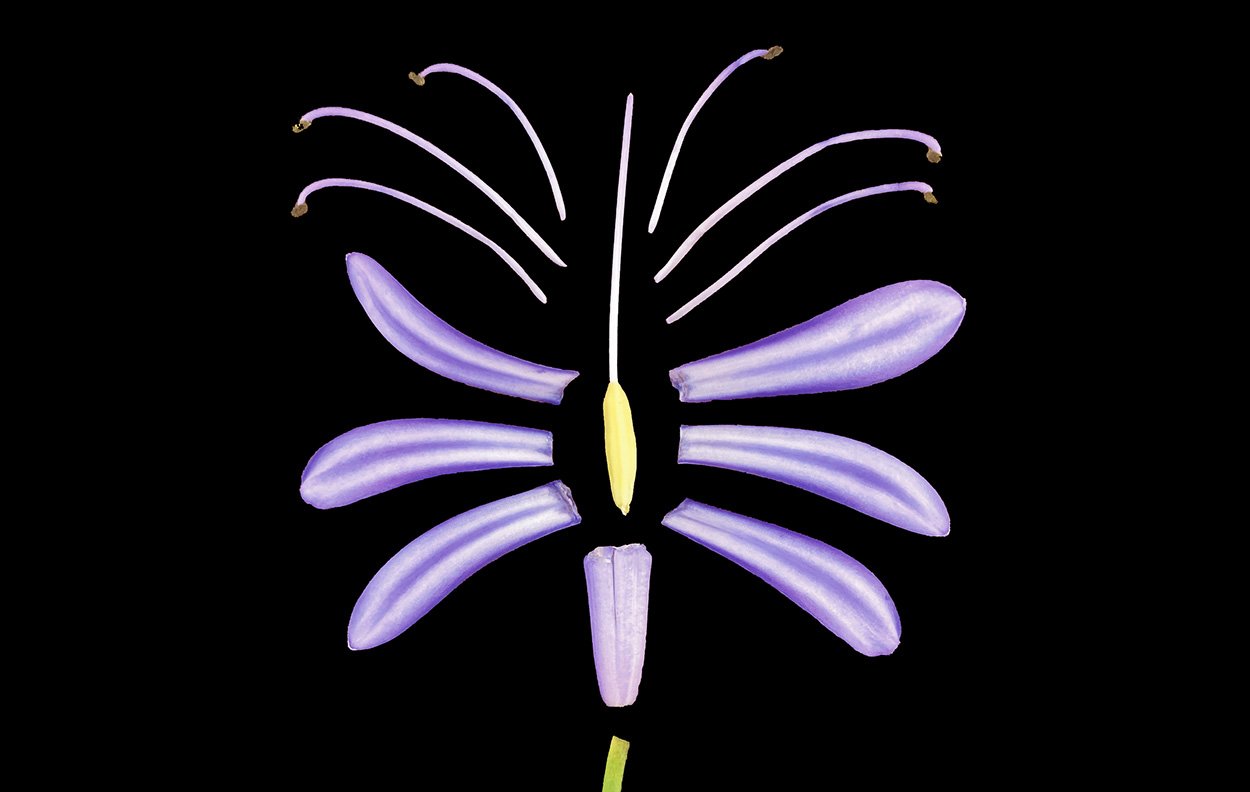Today’s plants enjoy great diversity and complexity. A new study shows that it was based on two crucial evolutionary leaps: first, the emergence of seeds in the late Devonian period 375 million years ago, and then the evolution of flowers in the middle of the Cretaceous period 125 million years ago. However, in the 250 million years between these evolutionary spurts, there was a plateau phase without major evolutionary innovations.
When it comes to reproduction, plants have developed different strategies. Some are optimally designed to allow the wind to help them reproduce, while others attract pollinators with colorful flowers. But when and how did this diversity arise? When researchers have dealt with these questions thus far, they have usually been analyzing individual groups such as flowering plants, conifers and ferns separately—because the great diversity made uniform classification difficult.
wrong development
Now a team led by Andrew Leslie of Stanford University in California has used a new and simple method to make all vascular plants comparable to each other and to track their evolution: “We divided the reproductive structures of vascular plants into their basic components and a number of different types of specific parts,” explain the researchers. Among other things, they counted structures such as petals, stamens, and spore capsules. “This tells a very simple story about the evolution of plant reproduction in terms of form and function: the more functions plants have, the more specific they are, the more parts they have,” says Leslie.
Using this method, the researchers classified 1,338 living and fossil plants, from ferns to conifers to flowering plants. The result: the complexity of the plants did not increase gradually, but in two significant batches. The researchers describe: “The first push occurred in the late Devonian period, about 375 million years ago, when vascular plants spread and eventually non-flowering seed plants appeared.” “The second leap occurred in the middle Cretaceous period about 125 million years ago and is associated with the fact that flowering plants appeared and diversified rapidly.”
Plateau stage before critical innovation
During the 250 million years between these evolutionary leaps, new species also emerged, but the complexity of plants did not change significantly. “This inertia is surprising,” Leslie says. “The reproductive structures look different in all of these plants, but they all contain roughly the same number of segments during this plateau stage of development.” However, in the animal world, significant changes occurred during this time: wild animals became larger and more diverse, dinosaurs spread and the world of insects became more diverse.
On the other hand, factories were able to use these developments surprisingly of late. “Pollination by insects and seed dispersal by animals were possible 300 million years ago, but only in the last 100 million years have these really complex interactions with pollinators made flowering plants so complex,” Leslie says. “There was a long period of time when it was theoretically possible for plants to interact with insects as with flowering plants today, but it didn’t do so with the same degree of complexity.”
Complex Pollination Mechanisms
Plants reached their greatest complexity and diversity with the development of flowers. Within a short period of time, flowering plants have spread all over the world and today, with about 350,000 species, they make up 90 percent of all land plants. “The basis for this was a fundamental innovation, the carp that surrounds the seed,” the researchers wrote. “This enabled the development of specific vaccination mechanisms.” Among flowering plants, Leslie and colleagues found the greatest complexity in which species are pollinated by animals. On the other hand, flowering plants that depend on wind or self-pollinate are less complicated to construct.
In the researchers’ view, the complexity reflects the functional diversity of plants. Although their method of measuring complexity is based solely on the number of different parts and neglects other aspects such as the internal anatomy of plants, they see this as a useful tool for making very different plants comparable. “Our approach enables us to simplify the vast range of reproductive morphology of vascular plants, identify important temporal patterns in the development of this diversity and review long-standing insights into its evolution,” the researchers say.
Coyle: Andrew Leslie (Stanford University, California, USA) et al., Science, doi: 10.1126/science. abi6984

“Alcohol buff. Troublemaker. Introvert. Student. Social media lover. Web ninja. Bacon fan. Reader.”






More Stories
Ecologists Celebrate New Xesap National Park in Laos | Science
Is the wrong diet making you forget?
We can study it with a new telescope.